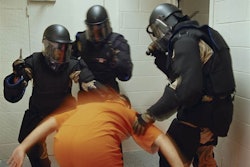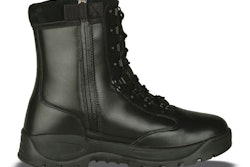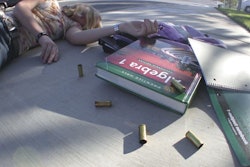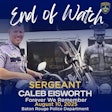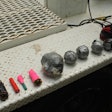The officers were inducted into the IACP/DuPont Kevlar Survivors' Club, in its fifteenth year, at the 109th International Association of Chiefs of Police show in October.
Ken Osmond, a retired officer with the Los Angeles Police Department, had never heard of the IACP/DuPont Kevlar Survivors' Club until he saw a program on television. But he knew right away he wanted to be a part of the campaign to save officers' lives with ballistic vests. And this year Osmond, whom many know as Eddie Haskell from the television show "Leave it to Beaver," became an inductee of the Survivors' Club himself.
Ken Osmond owes his life to his partner and a bullet resistant vest.
In 1980, he was shot three times while trying to apprehend a car thief. Two bullets impacted his chest, while the third struck the buckle of his gun belt. After Osmond was knocked back by the impact of the shots, the shooter advanced on him with his gun drawn. Osmond's partner, Henry Lane, who had expended his rounds, struggled with the armed subject and was able to subdue him.
Osmond is grateful that he survived his encounter and credits the vest with saving his life. He wants others to understand the importance of wearing vests on the job.
"I know vests can be hot and uncomfortable," says Osmond. "Sweat doesn't feel good running down your body, but it's better than blood. I tell my story, and hopefully it will sink in and they'll say, 'He's right.'"
Two officers from the Thornton (Colo.) Police Department joined the Survivor's Club this year.
In March, Officer Denise Connelly was on motorcycle patrol on a busy street, travelling at 45 miles per hour when a vehicle suddenly pulled from a business driveway in front of the officer without warning. Despite Connelly's efforts to evade a collision, her motorcycle impacted the driver's side of the vehicle, simultaneously slam-ming her torso into the handlebars of the motorcycle and the turning vehicle.
Officer Connelly sustained severe multiple fractures to her right ankle and broke her right collarbone. The physicians treating Officer Connelly credited her personal body armor with protecting her from likely severe in-ternal injuries. She was able to leave the hospital after a four-day stay.
Less than three weeks after Officer Connelly's accident, Sergeant Greg J. Reeves, also of the Thornton PD, was shot during a SWAT call to a domestic dispute.
When a dispute between two roommates escalated into an armed confrontation with police, Reeves responded as SWAT team leader. One of the roommates was drinking, was brandishing a knife, and had access to multiple firearms. He was refusing to exit the residence, making both suicidal and homicidal threats.
After the subject broke off contact with negotiators, the SWAT team forcibly entered the residence. Reeves saw the subject's foot in an interior crawl space and ordered him to surrender to the police. The suspect blindly fired a single round from a .357 Magnum revolver. The shot penetrated the wall, striking Reeves in the right rear torso. The bullet was stopped by the sergeant's ballistic vest.
All three of this year's inductees received plaques for wearing their vests and for serving as examples to other police officers.




